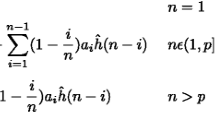Abstract
This paper presents a new steganalysis method that uses a deep belief network (DBN) as a classifier for audio files. It has been tested on three steganographic techniques: StegHide, Hide4PGP and FreqSteg. The results were compared to two other existing robust steganalysis methods based on support vector machines (SVMs) and Gaussian mixture models (GMMs). Afterwards, another classification task aiming at identifying the type of steganographic applied or not to the speech signal was carried out. The results of this four-way classification show that in most cases, the proposed DBN-based steganalysis method gives higher classification rates than the two other steganalysis methods based on SVMs and GMMs.





Similar content being viewed by others
Explore related subjects
Discover the latest articles, news and stories from top researchers in related subjects.References
Altun, O., Sharma, G., Celik, M. U., Sterling, M., Titlebaum, E. L., & Bocko, M. (2005). Morphological steganalysis of audio signals and the principle of diminishing marginal distortions. In ICASSP, 2, 21–24.
Artz, D. (2001). Digital steganography: hiding data within data. IEEE Internet Computing, 5(3), 75–80.
Garofolo, J. S., et al. (1993). TIMIT: acoustic-phonetic continuous speech corpus LDC93S1. Web download. Philadelphia: Linguistic Data Consortium.
Ghasemzadeh, H., & Arjmandi, M. K. (2014). Reversed-mel cepstrum based audio steganalysis. In 2014 4th international eConference on computer and knowledge engineering (ICCKE), (pp. 679–684). IEEE.
Hetzl, S. (2003). StegHide steganography. http://www.steghide.sourceforge.net/.
Hinton, G. E., Osindero, S., & Teh, Y.-W. (2006). A fast learning algorithm for deep belief nets. Neural Computation, 18(7), 1527–1554.
Hu, Y., & Loizou, P. C. (2007). Subjective comparison and evaluation of speech enhancement algorithms. Speech Communication, 49(7), 588–601.
Janicki, A., Mazurczyk, W., & Szczypiorski, K. (2014). Steganalysis of transcoding steganography. Annals of Telecommunications, 69(7–8), 449–460.
Johnson, M. K., Lyu, S., & Farid, H. (2005). Steganalysis of recorded speech. In Proceedings of the electronic imaging 2005, (pp. 664–672). International Society for Optics and Photonics.
Kraetzer, C., & Dittmann, J. (2007). Mel-cepstrum-based steganalysis for voip steganography. In Proceedings of the electronic imaging 2007. (pp. 664–672) . International Society for Optics and Photonics.
Liu, Q., Sung, A. H., & Qiao, M. (2009). Temporal derivative-based spectrum and mel-cepstrum audio steganalysis. IEEE Transactions on Information Forensics and Security, 4(3), 359–368.
Ozer, H., Avcibas, I., Sankur, B., & Memon, N. D. (2003). Steganalysis of audio based on audio quality metrics. In Proceedings of the electronic imaging 2003. (pp. 55–66). International Society for Optics and Photonics.
Palm, R. B. (2012). Prediction as a candidate for learning deep hierarchical models of data. Master’s thesis, Technical University of Denmark.
Rekik, S., Selouani, S.-A., Guerchi, D., & Hamam, H. (2012). An autoregressive time delay neural network for speech steganalysis. In 2012 11th international conference on information science, signal processing and their applications (ISSPA). (pp. 54–58). IEEE.
Repp, H. (1996). Hide4PGP Steganography. http://www.heinz-repp.onlinehome.de/Hide4PGP.htm.
Swanson, E., Ganier, C., Holman, R., & Rosser, J. (2002). Freqency domain steganography. https://www.clear.rice.edu/elec301/Projects01/smokey_steg/group.html.
Yürüklü, E., Koçal, O. H., & Dilaveroğlu, E. (2014). A new approach for speech audio steganalysis using delay vector variance method. Uludağ Üniversitesi Mühendislik Fakültesi Dergisi, 19(1), 27–36.
Author information
Authors and Affiliations
Corresponding author
Rights and permissions
About this article
Cite this article
Paulin, C., Selouani, SA. & Hervet, É. Audio steganalysis using deep belief networks. Int J Speech Technol 19, 585–591 (2016). https://doi.org/10.1007/s10772-016-9352-6
Received:
Accepted:
Published:
Issue Date:
DOI: https://doi.org/10.1007/s10772-016-9352-6




